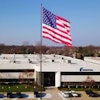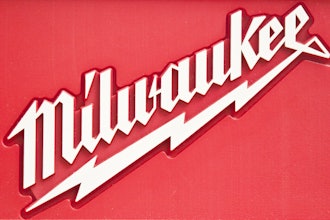
WASHINGTON (AP) — The U.S. unemployment rate fell to 3.7 percent in September — the lowest level since December 1969 — while hiring slowed. Employers added just 134,000 jobs, the fewest in a year, the Labor Department said Friday. But that figure was likely lowered by Hurricane Florence.
Florence struck North and South Carolina in the middle of September and closed thousands of businesses. A category that includes restaurants, hotels and casinos lost jobs for the first time since last September, when Hurricane Harvey exerted a similar effect.
Still, September extended the longest streak of hiring on record, with millions of Americans having gone back to work since the Great Recession. Healthy consumer and business spending has been fueling brisk economic growth and emboldening employers to continue hiring. The September gain extended an 8½-year streak of monthly job growth.
Aside from the impact of the storm, the underlying trend in hiring remains strong. Job gains in August and July were revised sharply higher, to show 87,000 more jobs were added. Employers have added a robust 190,000 jobs over the past three months.
Last month, average hourly pay increased 2.8 percent from a year earlier, one tick below the year-over-year gain in August.
That figure could rise in the coming months. With the unemployment rate so low, companies are facing intense pressure to boost pay to find the workers they need. Amazon responded on Tuesday by raising its minimum wage to $15 an hour.
Consumers, business executives and most economists remain optimistic. Measures of consumer confidence are at or near their highest levels in 18 years. Retailers have begun scrambling to hire enough workers for what's expected to be a robust holiday shopping season. A survey of service-sector firms, including banks, hotels and health care providers, found that they are expanding at their fastest pace in a decade.
Americans have continued spending steadily and appear to be in generally stable financial shape. Households are saving nearly seven percent of their incomes — more than twice the savings rate before the recession. That trend suggests that a brighter economic outlook hasn't caused consumers to recklessly build up unsustainable debt.
During the April-June quarter, the U.S. economy expanded at a 4.2 percent annual rate, the best in four years. Economists have forecast that growth reached a 3 percent to 3.5 percent annual rate in the July-September quarter.
The economy does show some weak spots. Sales of existing homes have fallen over the past year. Increasingly expensive houses, higher mortgage rates and a shortage of properties for sale are slowing purchases. Auto sales have also slumped.
Other threats loom, too. Borrowing costs for businesses and consumers are rising. Pointing to the economy's health, the Federal Reserve last week raised the short-term interest rate it controls and predicted that it would continue to tighten credit into 2020 to manage growth and inflation. Over time, higher borrowing costs make auto loans, mortgages and corporate debt more expensive and can eventually slow the economy.
But for now, anticipating stronger growth — and perhaps higher inflation — investors have dumped bonds and forced up their yields. The yield on the government's 10-year Treasury note, a benchmark for mortgages and other loans, has touched its highest level in seven years.
President Donald Trump's trade fights could also weigh on the economy, though the effect on hiring won't likely be felt until next year, economists say. The Trump administration has imposed tariffs on imported steel and aluminum as well as on roughly half of China's imports to the United Sates. Most U.S. businesses will try to absorb the higher costs themselves, at least for now, economists say, and avoid layoffs.
Still, should the tariffs remain fully in effect a year from now, roughly 300,000 jobs could be lost by then, according to estimates by Mark Zandi, chief economist at Moody's Analytics.






















